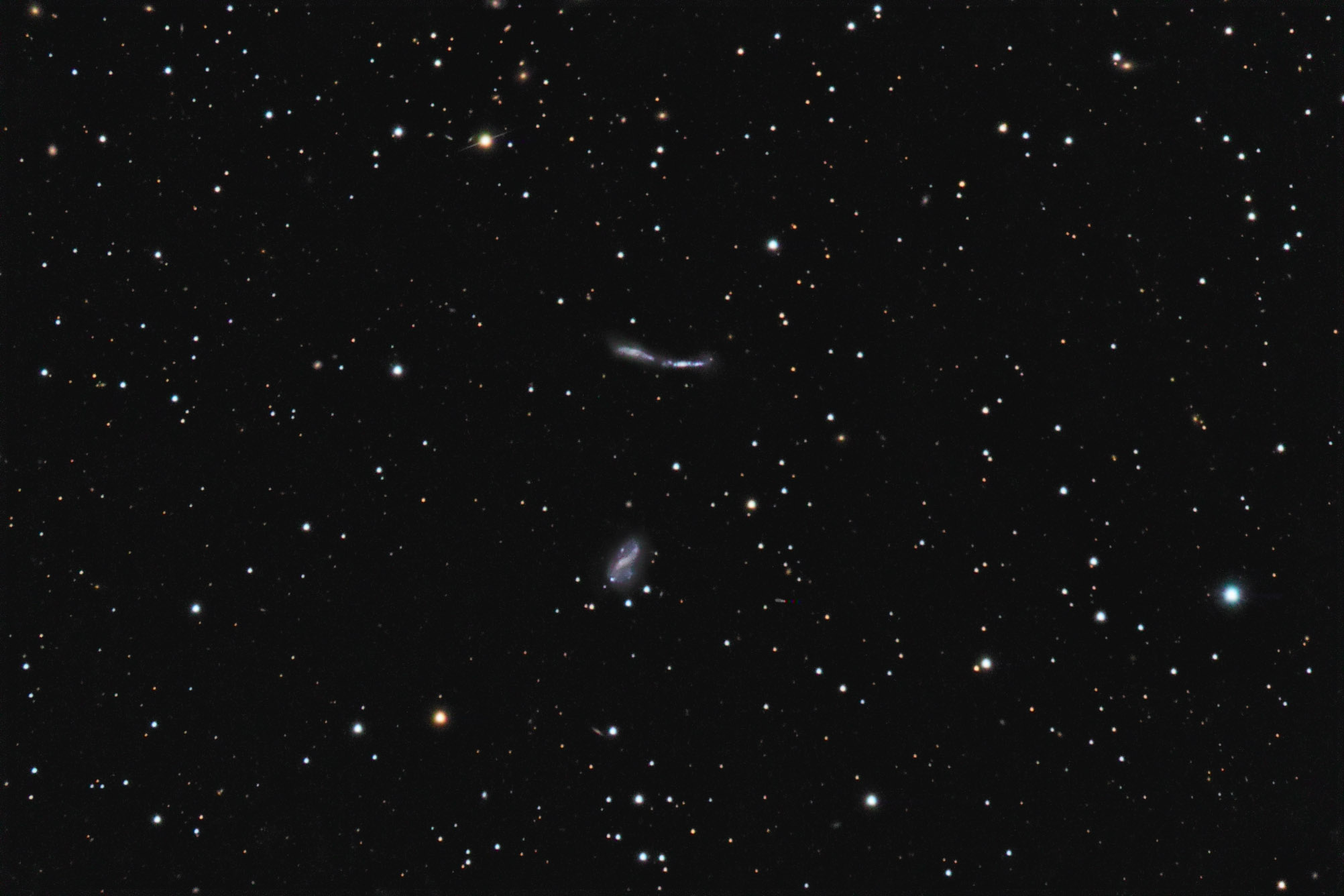| Description | Images |
Object name: ARP253Designation(s): ARP253, UGC00173, UGC00174, PGC027825, Arp 253 is a pair of probably interacting galaxies located near the western border of Sextans about 100 million light-years distant. At least that's the distance to the western galaxy which is also cataloged as UGCA 173. A secondary distance estimate puts it at 90 million light years. Since galaxies have motions besides that of the expansion of the universe the difference is really quite normal and expected. It is classed by NED as SB(s)dm? The eastern galaxy is UGCA 174. There are no distance estimates for it but likely it is truly interacting with UGCA 173 and thus at the same distance. It is classed as SB(s)m? Arp's only comment indicates there may be some stellar resolution or else HII regions. At that distance, the latter would most likely be what he was seeing. Arp classed it under Galaxies (not classifiable as S or E); appearance of fission. As with most galaxies in the classification, I don't seem to understand why he says that. Does he mean the two galaxies look like two rod-like bacterial splitting? They often move around like two train cars before splitting completely. Or is he referring to the various parts of UGCA 173? Related Designation(s):1RXS J001823.8+300357, 2MASS J00182257+3004463, 2MASS J00182354+3003479, 2MASX J00182252+3004465, 2MASX J00182359+3003475, 2MASXi J0018225+300446, 2MASXi J0018235+300347, 6dF J0943286-052156, ARP 113, ARP 253, ARP253, CGCG 0015.8+2947, CGCG 0015.8+2949, CGCG 499-107, CGCG 499-108, GSC 4901 00858, HDCE 0011 NED005, HDCE 0011 NED006, HOLM 006B, HOLM 006C, IC 1539, IRAS F00157+2948, IRAS F09408-0503, IRAS F09409-0508, LCSB F0026O, LDCE 0012 NED014, LDCE 0012 NED015, LGG 179:[G93] 003, LQAC 004+030 001, LQAC 004+030 002, MAPS-PP O_1257_0202235A, MAPS-PP O_1257_0202235B, MCG +05-01-067, MCG +05-01-068, MCG -01-25-033, NGC 0070, NGC 0071, NSA 126615, NSA 126617, NVSS J001823+300439, PGC 001194, PGC 001197, PGC 027825, PGC027825, RSCG 01:[WBJ2013] A, RSCG 01:[WBJ2013] C, RX J0018.3+3003, RX J0018.3+3003:[BEV98] 002, RX J0018.3+3003:[ZEH2003] 03 , SRGb 062.055, SRGb 062.056, UGC 00173, UGC 00174, UGC00173, UGC00174, USGC U012 NED05, USGC U012 NED10, UZC J001822.6+300446, UZC J001823.6+300348, VV 052, VV 166a, VV 166c, WBL 007-009, WBL 007-010, [M98j] 003 NED01, [VCV2001] J001822.6+300446, [VCV2001] J001823.5+300347, [VCV2006] J001822.6+300446, [VCV2006] J001823.5+300347, |
